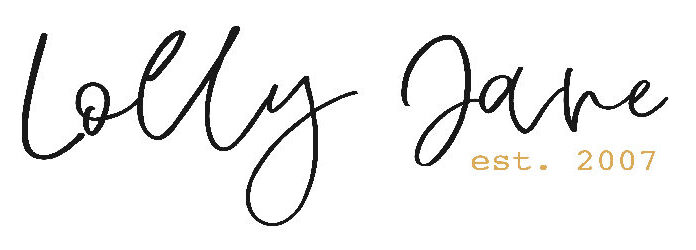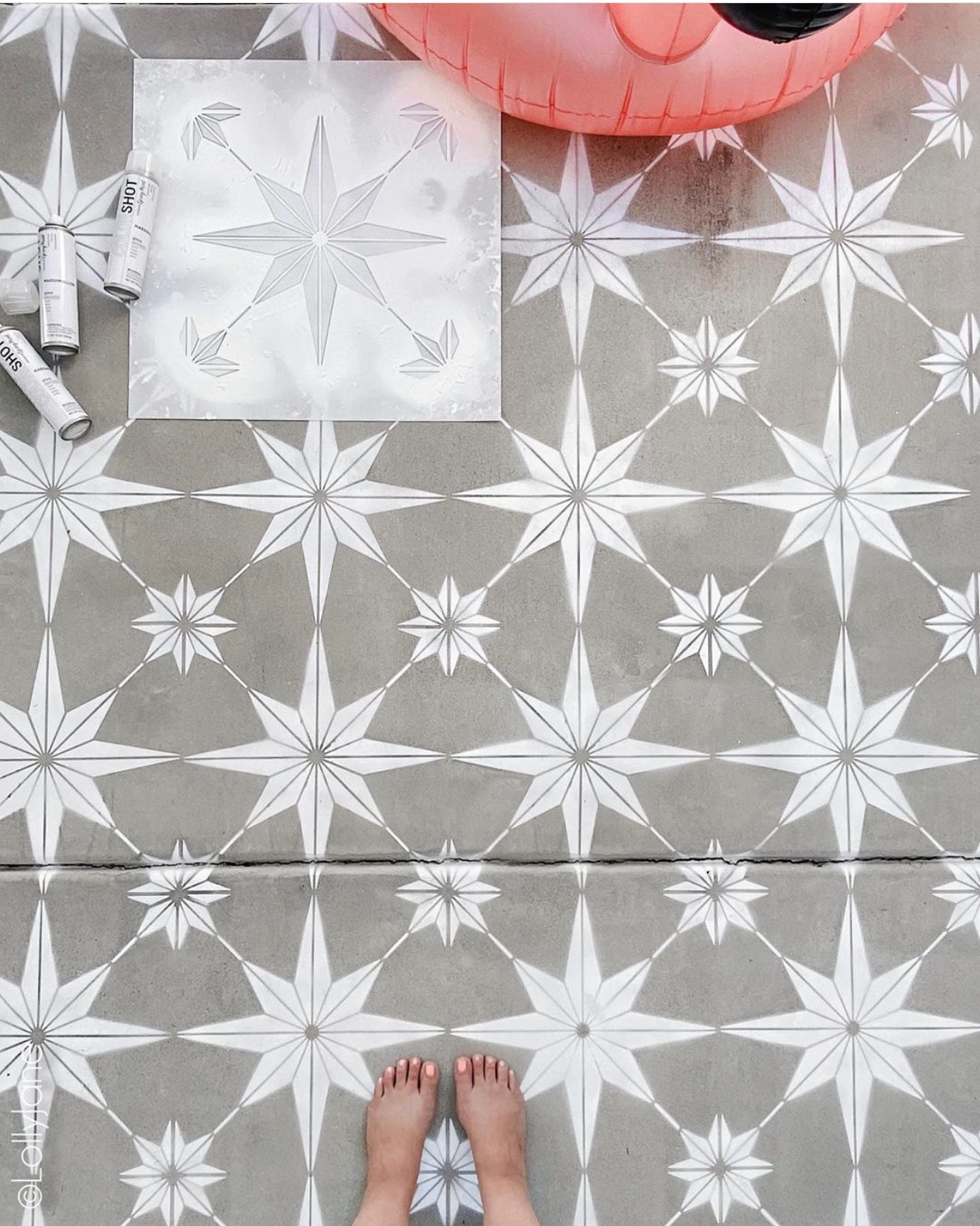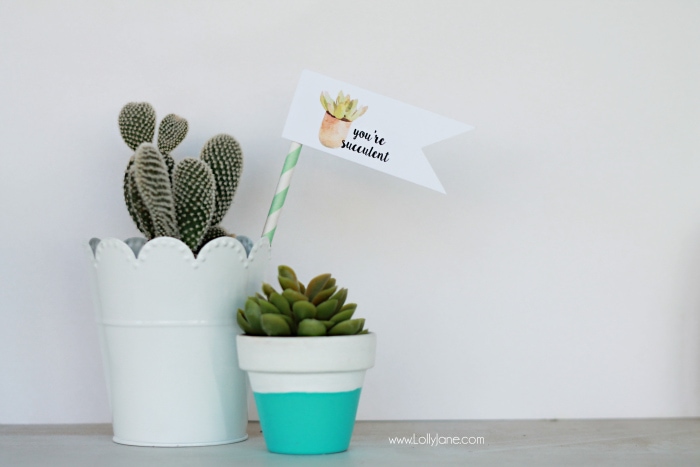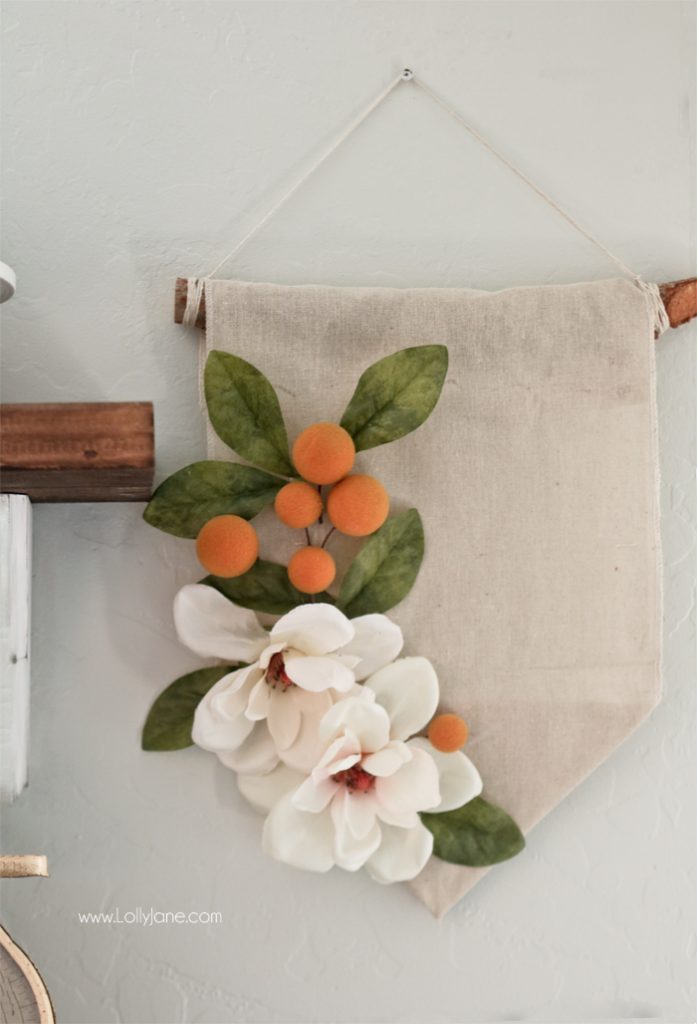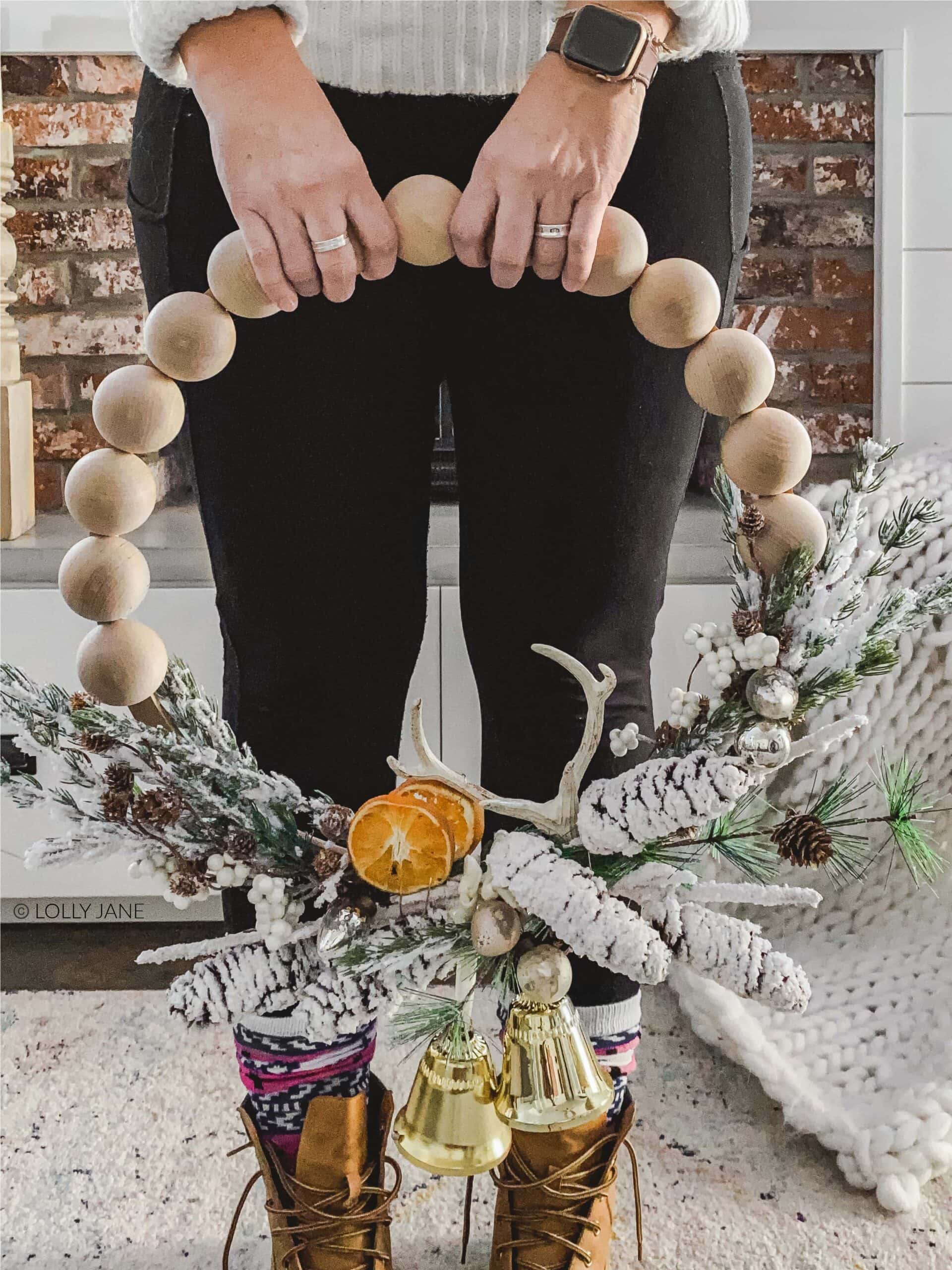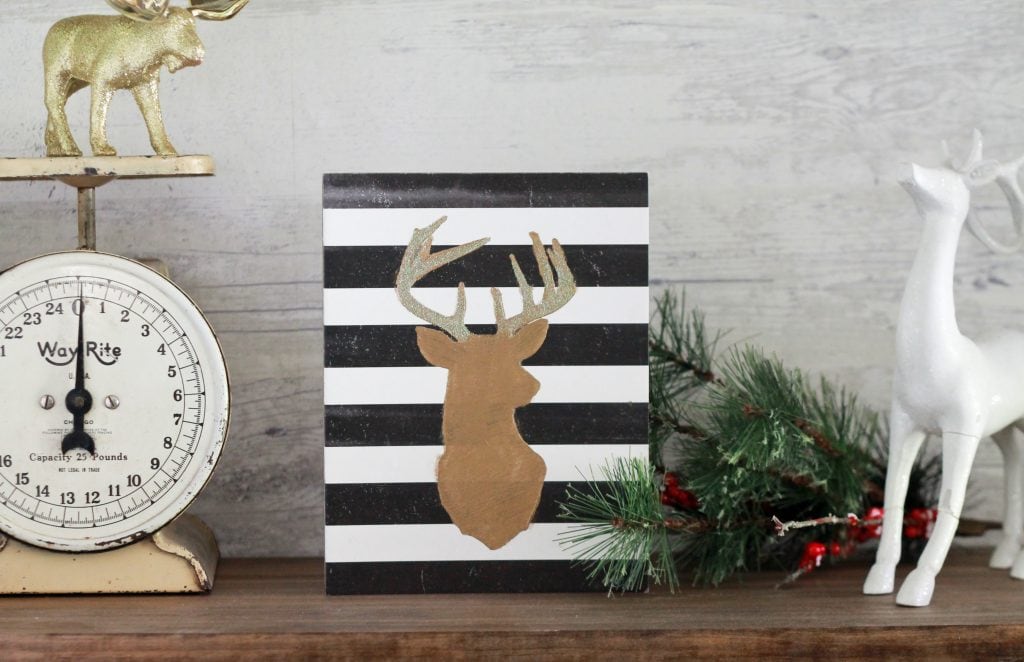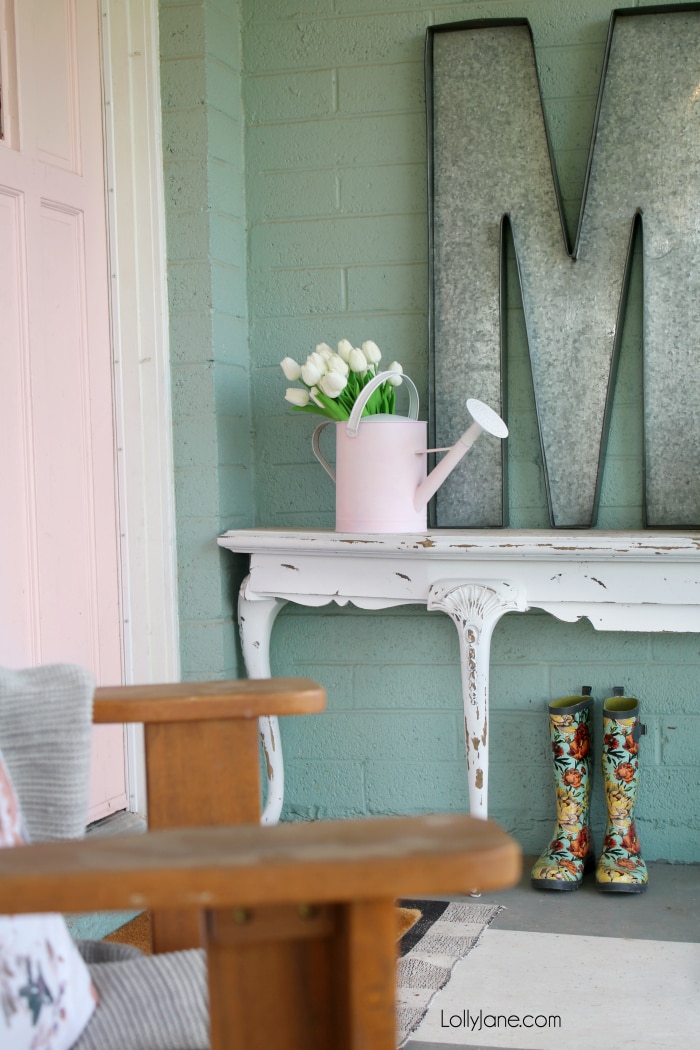Soda Blasting Furniture
If you’ve ever stripped paint from furniture, you know how tricky it can be. Layers of old paint can build up, making it a time-consuming task. But there’s a less well-known method that’s super effective: soda blasting. This was wildly popular with our Instagram community so we thought we’d finally write it down in one spot since we only have it saved on our stories thus far.

What is Soda Blasting?
Soda blasting isn’t as messy as it sounds. It’s a process that uses sodium bicarbonate (yes, baking soda!) to gently blast away paint or grime from surfaces. Think of it like power washing, but instead of water, it’s a fine powder that’s non-toxic and eco-friendly.
Why would you use soda blasting? It’s perfect for delicate furniture where you want to remove old paint without damaging the surface underneath. It’s especially good on wood, which can get scratched or gouged with harsher methods. Plus, soda blasting can get into all those tricky nooks and crannies—like intricate carvings or crevices—that sanding alone can’t easily reach.
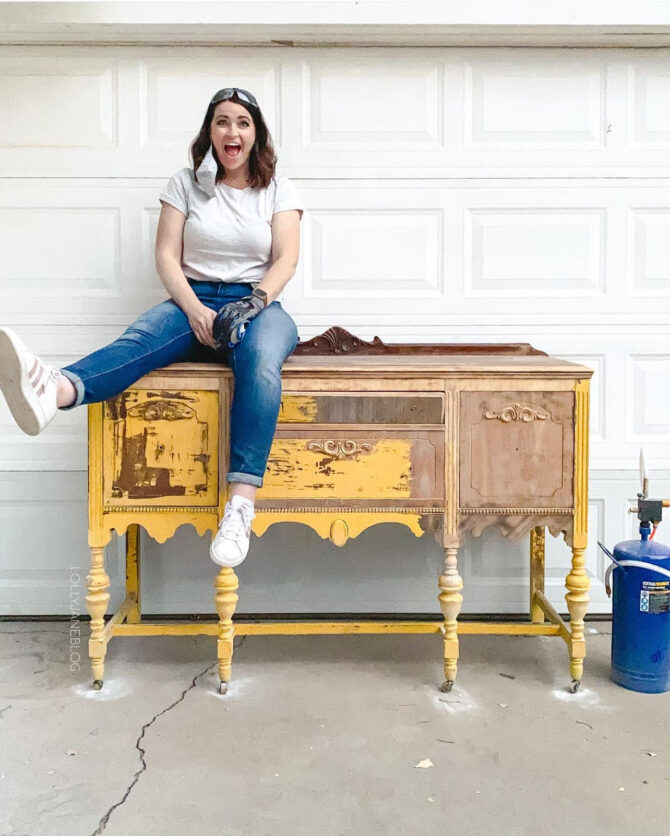
It’s worth noting that while soda blasting is effective, it can be a bit more involved since you’ll need special equipment. Most people rent a soda blaster or hire a professional, but the results can be worth it if you’re dealing with years of paint build-up like my great-grandmother’s buffet below. It started off as a dark stain when I inherited it. I painted it a cheery gold in my bright color days and am full of regret as this took hours to remove. Here’s the before in all its yellow glory.
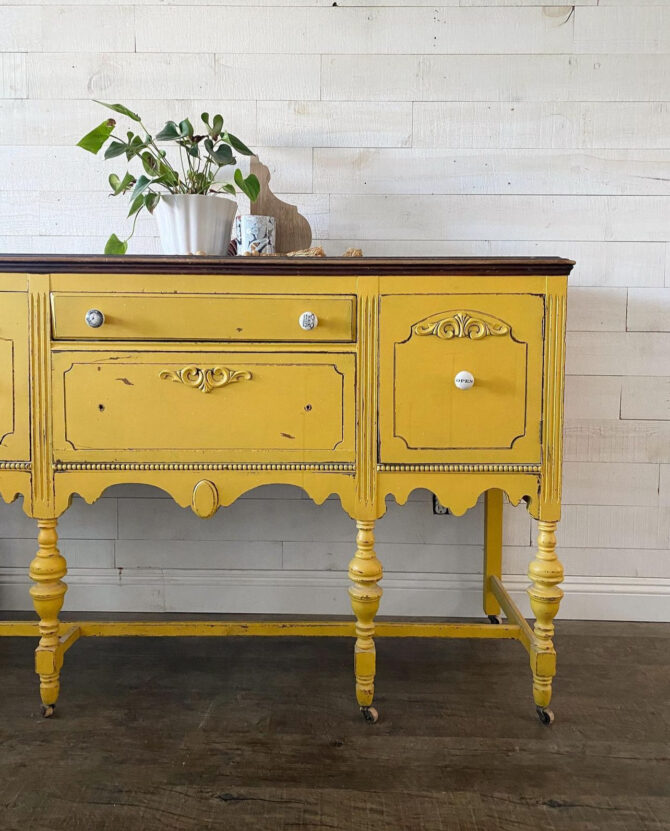
Is Soda Blasting Expensive?
Soda blasting can vary in cost depending on a few factors, but it’s generally not considered the cheapest method for paint removal. If you’re doing it yourself, you’ll need to rent or buy the soda blasting equipment, and that can run anywhere from $100 to $500 for a day’s rental, depending on the size and power of the machine. The soda media itself (the baking soda) isn’t too pricey, typically around $30 to $50 for a 50-pound bag, but you might need several bags depending on the project size.
While it might seem pricey up front, soda blasting can save you a lot of effort and potential damage to your furniture, making it worth the investment for certain projects. If you’re serious about refinishing furniture, it’s worth investing in a machine as you can sand quickly and with very little effort or elbow grease.
Can you DIY Soda Blasting?
Yes, you can definitely DIY soda blasting, I did! It’s a bit of a learning curve so here are a few things to consider before jumping in:
- Equipment: You’ll need a soda blaster, an air compressor and blast media.
- Space: Soda blasting creates a lot of dust, so you’ll want to do this in an outdoor space or a very well-ventilated area. If you’re working indoors, be prepared to cover and protect everything around you.
- Learning curve: While not overly complicated, using a soda blaster does require some practice to get the pressure settings and distance right. My biggest tip is to follow the instructions of your machine to the T. The pressure settings were quite frustrating but as soon as I got it in working order, it was a breeze. ⚠️TIP: It’s important to avoid holding the nozzle too close to the furniture to prevent any damage!
- Safety gear: Don’t forget to wear goggles, gloves, and a dust mask or respirator. Even though baking soda is non-toxic, you don’t want to breathe in the fine particles. Even though they’re small, the sand debris flips all around and will pelt your hands and arms so gloves are important along with long sleeves and jeans.
- Cleanup: It can get messy, so be prepared for a lot of soda dust. Fortunately, the cleanup is pretty straightforward since baking soda dissolves in water. I was able to sweep it up easily! And if you’re in a confined area without debris from the outside, you can even reuse your soda dust!

If you’re comfortable handling equipment and don’t mind the prep and cleanup, DIY soda blasting can be a great way to tackle paint removal.
Soda Blasting VS Sanding
Whether soda blasting is better than sanding really depends on your project and what you’re trying to achieve. Here’s a breakdown:
When soda blasting might be better:
- Delicate or intricate pieces: Soda blasting excels at reaching detailed carvings, corners, and crevices that are difficult to sand by hand.
- Multiple layers of paint: If you’re dealing with heavy paint build-up, soda blasting can strip it faster than sanding, saving you time and effort.
- Less risk of damage: Unlike sanding, which can sometimes remove too much wood if you’re not careful, soda blasting is gentler and less likely to wear down the surface.
- No dust from sanding: Instead of wood dust, soda blasting creates a fine powder that’s easier to clean up.
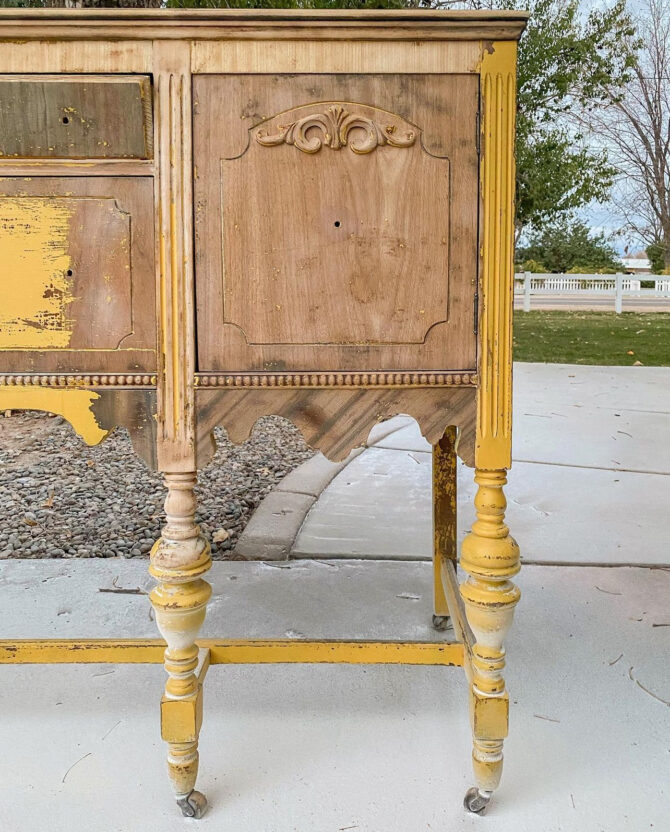
When sanding might be better:
- Simplicity and cost: Sanding is straightforward and requires less equipment. You likely already have some sandpaper or an electric sander on hand, and it’s much cheaper than investing in a soda blaster machine.
- Fine finishing: For a perfectly smooth finish, sanding is necessary after soda blasting anyway. Soda blasting removes paint, but it doesn’t leave a smooth, polished surface, so you’ll still need to sand for that final touch.
- Small projects: If you’re working on a small piece of furniture or just have a single layer of paint to remove, sanding might be all you need.
So, is it better than sanding? It depends! For larger, detailed jobs with lots of old paint, soda blasting might save you time and reduce the risk of damage. But for simpler tasks or finishing work, sanding is often more practical.
Does Soda Blasting Harm Wood?
No, soda blasting is actually pretty gentle on wood, which is one of the reasons it’s popular for furniture restoration. Unlike more abrasive methods like sandblasting, soda blasting uses fine particles of sodium bicarbonate that break down on impact, so they don’t dig into the surface. This means it can remove paint and grime without damaging or gouging the wood underneath.
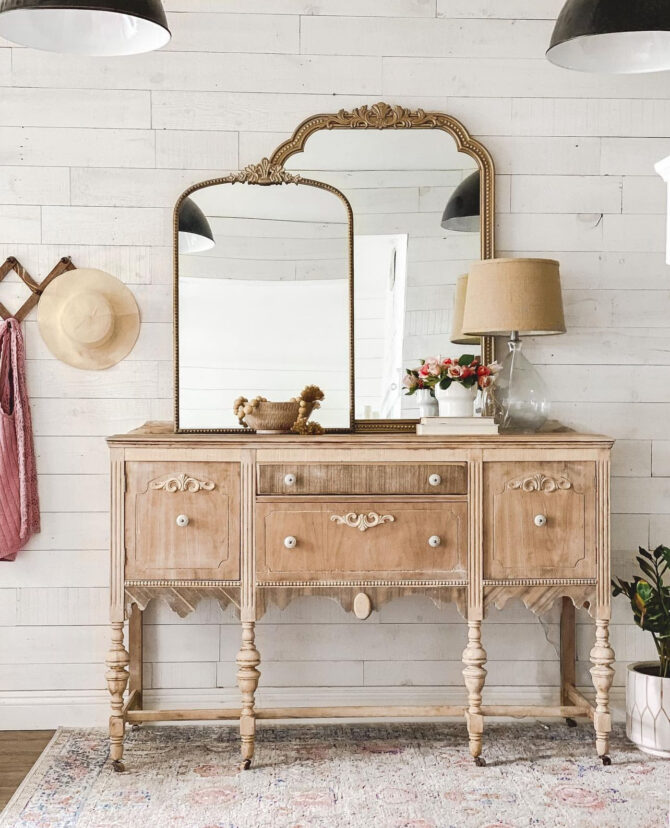
However, like any tool, it’s important to use it correctly. If the pressure is set too high or if the nozzle is held too close, it could still cause some minor surface damage. But overall, when done properly, soda blasting is a safe and effective way to strip paint from wood without harming its natural beauty or texture.
Is Soda Blasting Time Effective?
The time it takes to soda blast a piece of furniture depends on a few factors, like the size of the piece, how many layers of paint you’re removing, and the complexity of the surface (smooth vs. detailed or carved).
On average, for a medium-sized piece of furniture like a table, soda blasting can take about an hour or two. If there are multiple layers of old paint or intricate details, it will take longer. In contrast, large pieces like a wardrobe or a dresser could take several hours or even a full day if you’re doing it yourself. My buffet took a couple of days but I had intricate details that I had to repeatedly go over.
Compared to manual sanding, soda blasting is usually faster, especially when you’re dealing with tough paint build-up. However, you’ll still need to factor in setup time (like getting the equipment ready) and the clean-up afterward.
How Messy Is Soda Blasting?
Soda blasting can get pretty messy, but it’s manageable with the right setup. When the baking soda media hits the surface, it breaks down into a fine powder, which can create quite a bit of dust. You’ll likely have powder all around the work area, and depending on the ventilation, it can get into the air too. So, it’s best to do soda blasting outdoors or in a well-ventilated space like a garage.
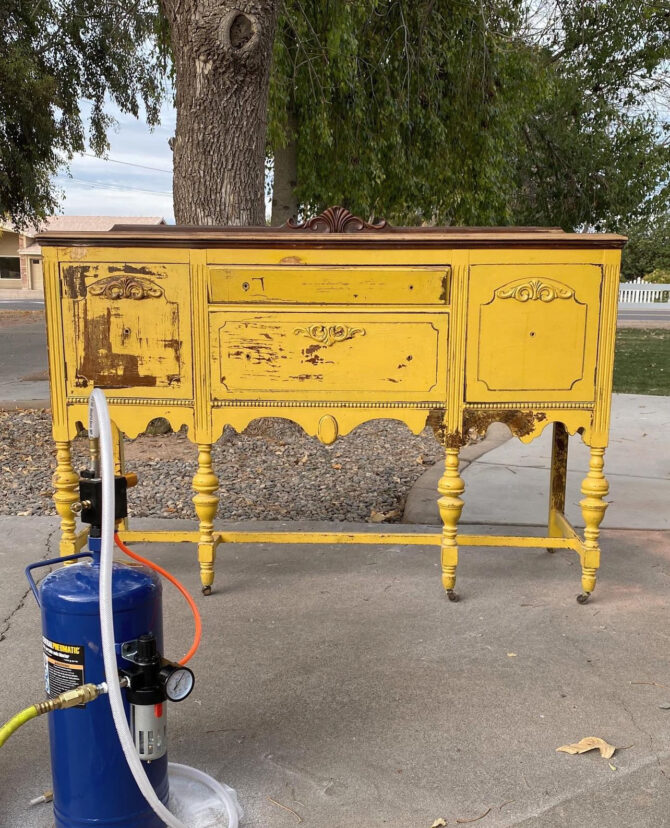
However, compared to sandblasting, soda blasting is a bit cleaner because the media dissolves more easily and doesn’t create as much debris. Plus, baking soda is water-soluble, so clean-up is relatively easy. You can sweep or vacuum the area and wipe down any surfaces. If you’re working outside, a simple rinse with water will wash away the soda.
Just be sure to protect surrounding furniture or areas you don’t want covered in soda dust by using drop cloths or tarps. Wearing protective gear like goggles, a dust mask, and gloves will also help keep things comfortable for you during the process.
The buffet turned out beautiful in the end. What I didn’t show is the hours and hours of frustration and sweat to get all the paint off. It was stuck so well on there that I still had to sand even after the soda blaster. However, the soda blaster was able to get in all the nooks and crannies which saved me hours of time.
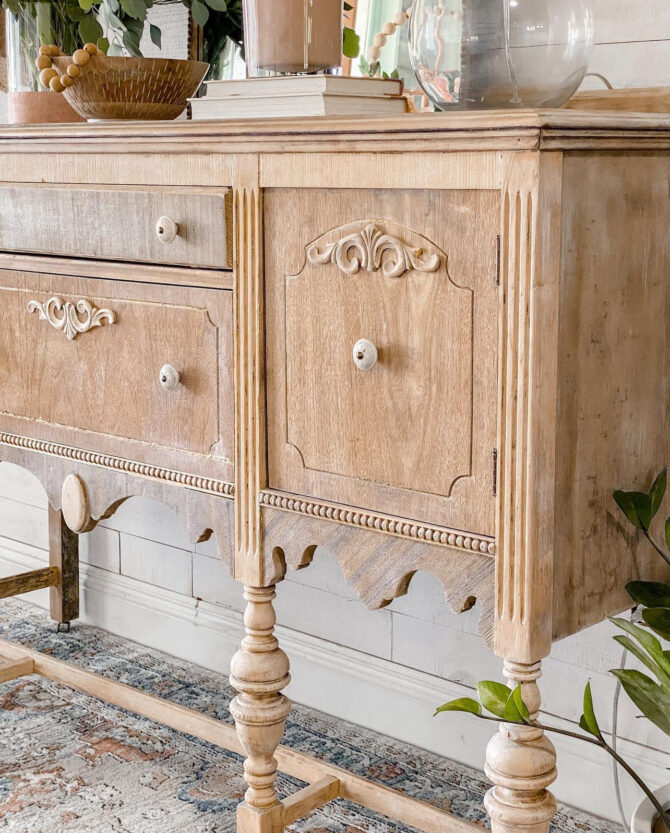
What do you think? Will you give it a go?
